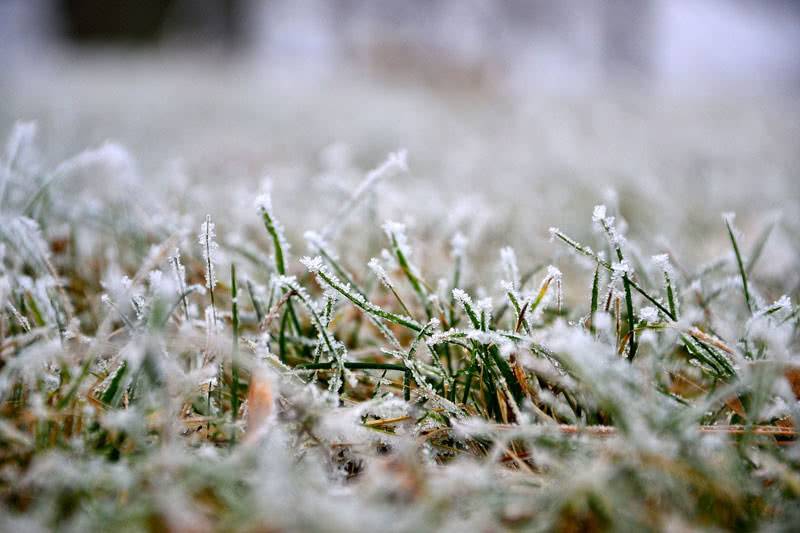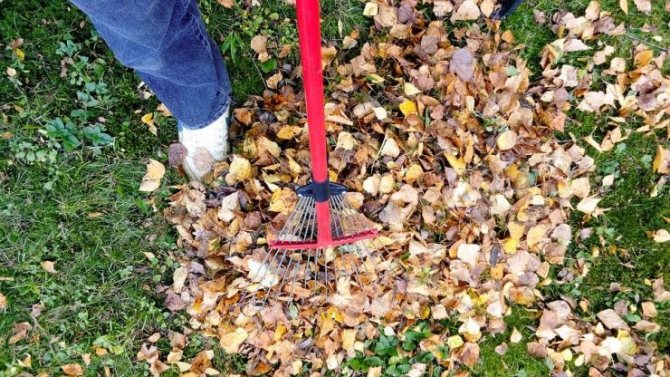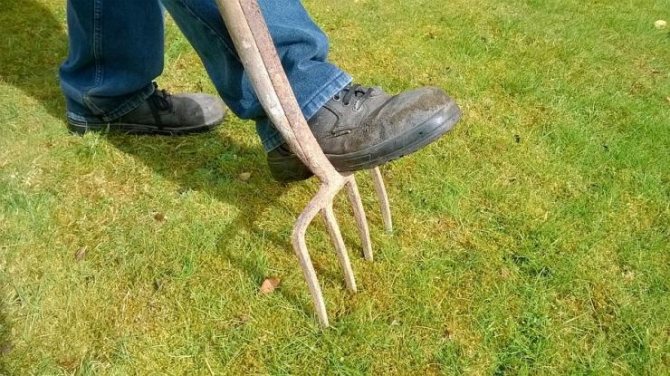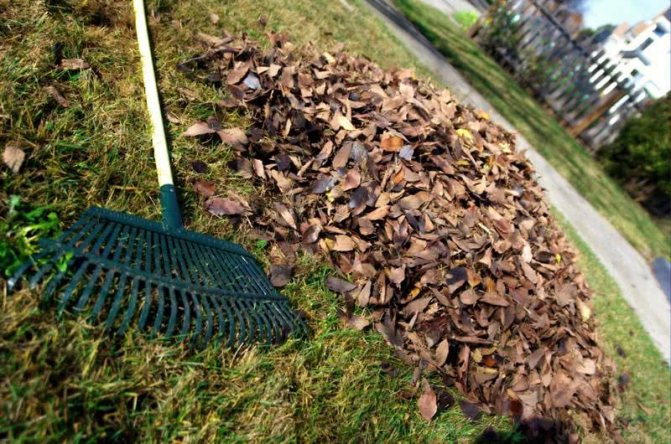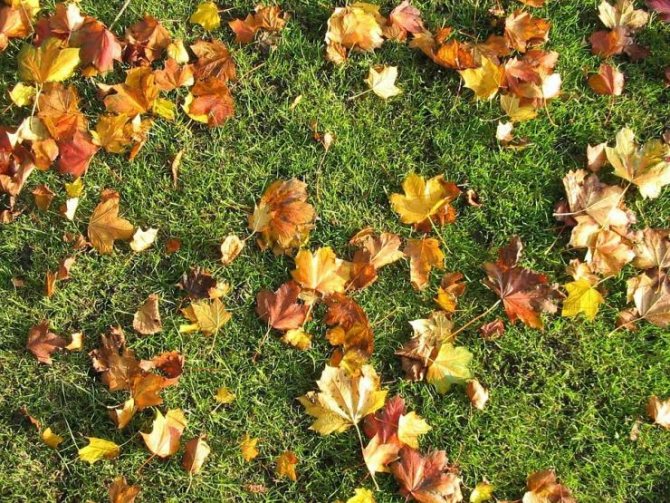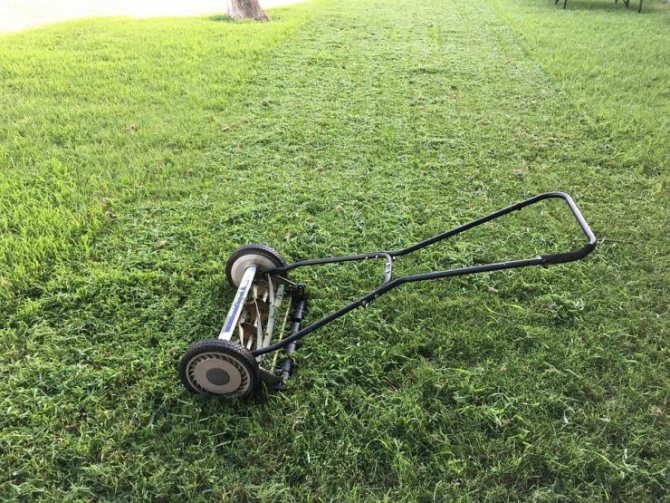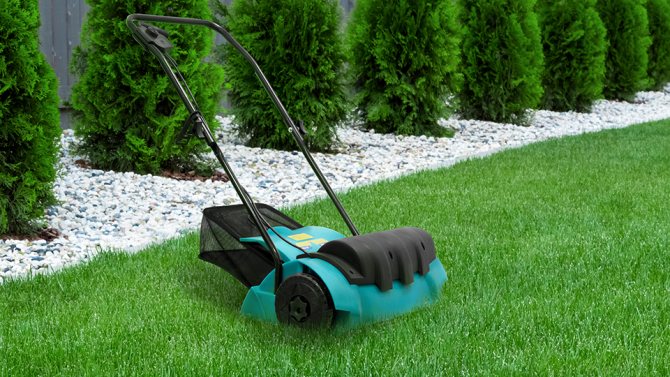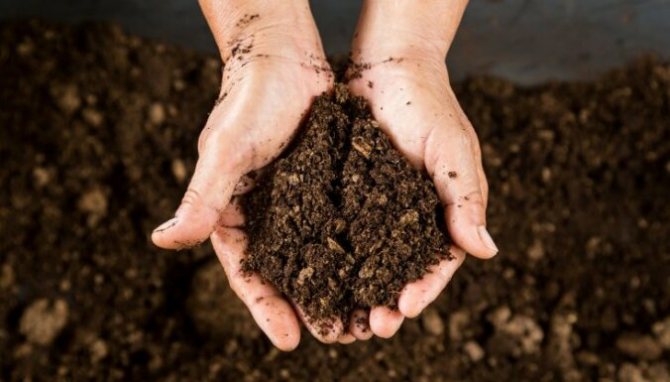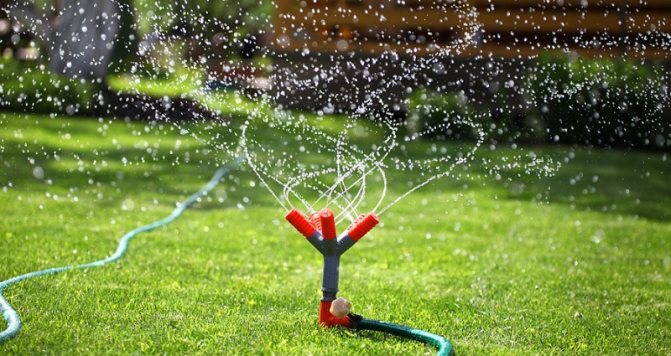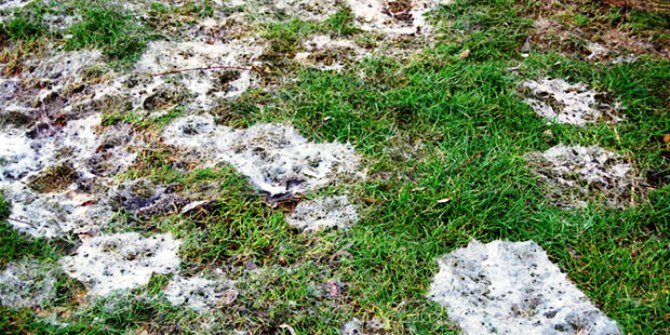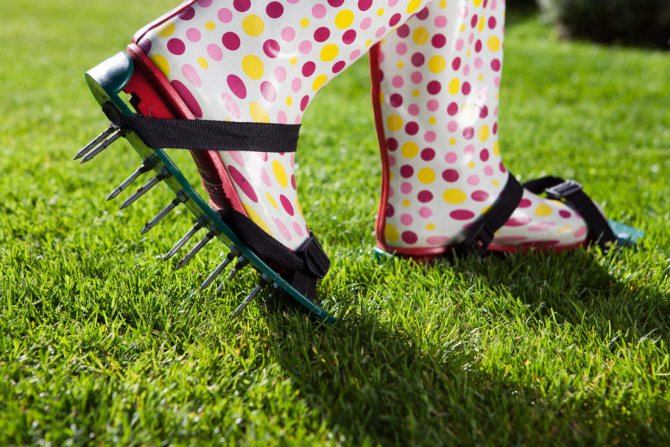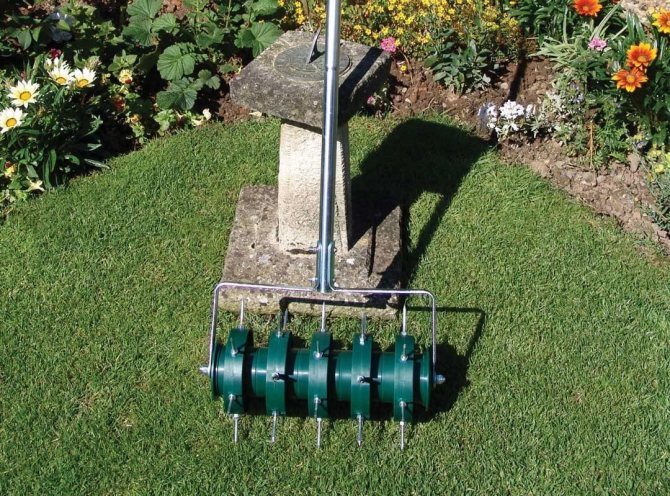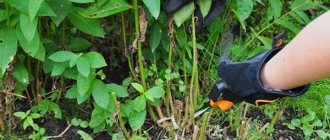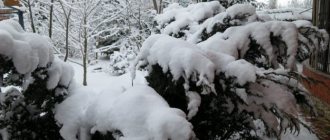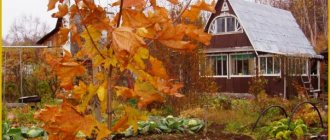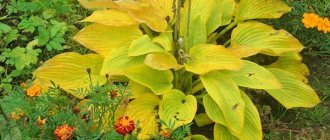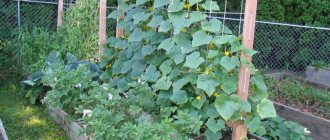A neat lawn gives a finished look to any area, however, the grass cover must be constantly looked after so that it does not lose its noble greenery. The lawn must be regularly watered, mowed, treated from weeds and pests. Even if your site is decorated with a more unpretentious roll lawn and an automatic irrigation system, which saves time in spring and summer, with the approach of cold weather, you will still be faced with the question of caring for the lawn in the fall, preparing for winter.
To successfully cope with this task and help the grass to winter, you will need to complete a set of works. Since September is already in the yard and winter is close, we devoted this article to this topic, in which we will analyze in detail the nuances of such procedures as lawn care in autumn, preparation for winter.
Preparing a lawn for winter - when and what procedures should be carried out in the fall
A well-groomed lawn is a sign of the owner's wealth, an indicator of his good taste and a certain status.
The advice I collected from experienced landscape designers and the knowledge gained in evening courses at the University Biology Faculty helped me in creating my own emerald lawn near my house, and most importantly, I developed a lawn care system!
I will be happy to share my knowledge and, albeit small, but my own, experience, and a proven lawn care system.
But first - some interesting facts (for motivation).

Brushing the grass on the lawn
It is not so easy to monitor the cleanliness of a summer cottage, especially in the conditions of keeping even a small farm. This also applies to the lawn, where a lot of debris is stuffed in the tough, finely cut grass. Dry leaves, pieces of paper, cobwebs, animal hair, feathers and down of birds, small branches, dried weed and other debris can form a rather thick layer of felt, which, if you ignore the rules of lawn care, will be very difficult to comb out in 3-4 weeks ... But if you devote only half an hour to cleaning the lawn every 7-10 days, the work will not be laborious!
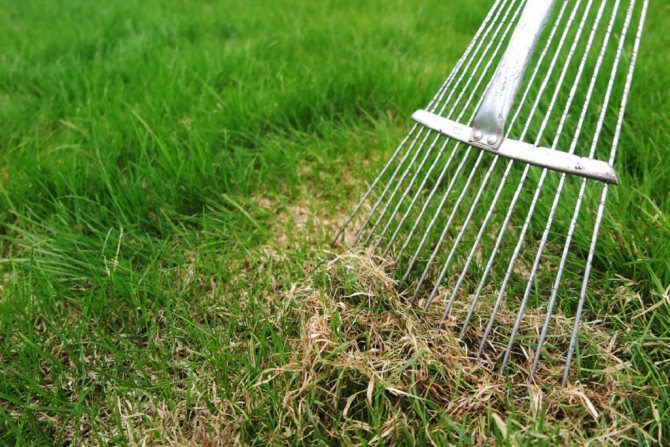

The accumulated rubbish, especially in the case of constant play of children on the lawn, or if you have picnics on the lawn, is driven deep into the "wool" of the grass, intertwined with it, and is already very difficult to remove. Sometimes, during harvesting, young grass also breaks out, which is best avoided. Damaging a lawn is very easy, but it takes a long time to restore it, and it is expensive!
Cleaning, namely the direct combing of the lawn, is carried out using the usual garden tools - a fan rake. They are adjustable according to the length of the working part, as well as the stiffness of the plates. Adjust them for your own convenience, and also not very hard for a green flooring, and systematically, consistently clean.
No special schemes, only advice from professional landscape planners: lawn combing is carried out longitudinally and transversely to facilitate the collection of debris entangled in the grass. Heavily soiled lawns may require several passes, more time!
Lawn? Lawn ... Lawn!
Lawns, or mown green lawns, are firmly associated with England, although there is not a single country where flat grass areas are not used in landscape design.
Interesting! The most expensive lawn today exists in Australia, around government buildings, and costs the state treasury several hundred thousand dollars a year. Its quality is monitored by dozens of employees, who every day adjust the irrigation and care system depending on weather conditions.
We repair the lawn
Despite the fact that many people prefer to leave the repair of the lawn in the spring, some preventive work can be started in the fall. Of course, overseeding of young grass should not be done due to the high probability of frost, and it is still more convenient to do this in the spring. But the autumn time is perfect for leveling the surface of your lawn using a mixture of sand and leaf humus. The mixture should be poured into small pits, tamping the sand. The common area of the lawn can be sprinkled with a mixture of peat and dry compost - this will help increase the fertility of the soil, which will deplete over the season.
Lawns are beauty, health and protection
The open green space gives rest to the eyes, walking on the lawn barefoot is welcomed by orthopedists and chiropractors.
The first steps of the baby on the soft grass will bring him unforgettable sensations, and the contact of bare feet with the lawn grass, especially over dew, will strengthen the immune system. The green space of the lawn absorbs noise and dust, freshens the air and protects the soil.
It is only in the well-known anecdote about the creation of the perfect English lawn (launa) that it is said that enough seeds for a few pence and 200 years of mowing.


In fact, the ideal home lawn is a set of ongoing operations. It is no coincidence that they say that the lawn is not for the lazy, but knowing and understanding the goals of lawn care operations will help even non-specialists get an eye-pleasing decoration of the site, and there is no need to wait 200 years!
The most important activity in the course of the lawn is its preparation for winter. Let's take a closer look at this process.
Aeration
In addition to the question of whether it is necessary to mow the lawn before winter, many gardeners have doubts about the need to aerate the soil. This procedure consists in loosening the soil, slightly thinning the roots and providing air access to them. Thus, the essence of the event is "airing" the soil.
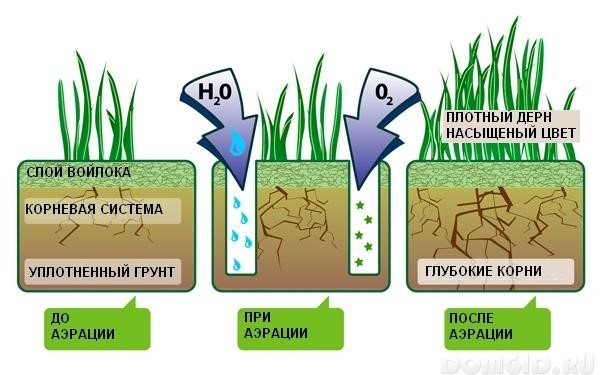

For aeration, special rollers with tips are used, manually transported over the lawn, automated devices, as well as ordinary garden forks or their original, specially adapted for aeration, analogues.
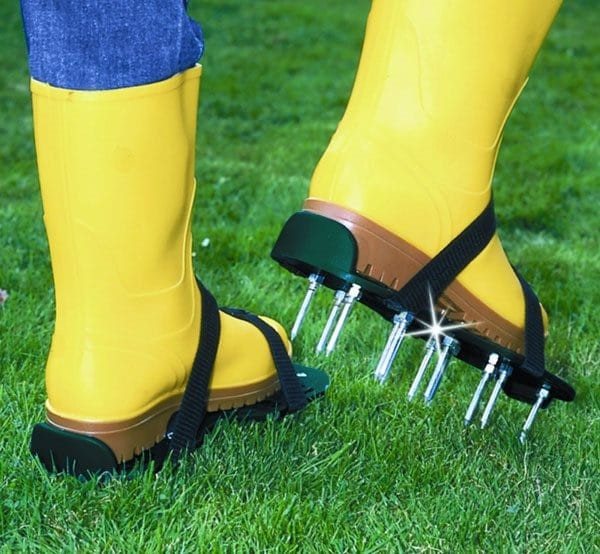

In such “needle shoes” it is enough to simply walk around the lawn in order to improve the access of air and nutrients to the roots of the lawn grass.
The use of this or that device depends on the area of the site: for small and medium-sized forks or pads on the soles, large lawns require the use of a manual or automated aeration roller.
It is convenient to combine aeration with scarification and scarification. This helps to save time and complete all work in one pass, thereby reducing stress on the lawn.
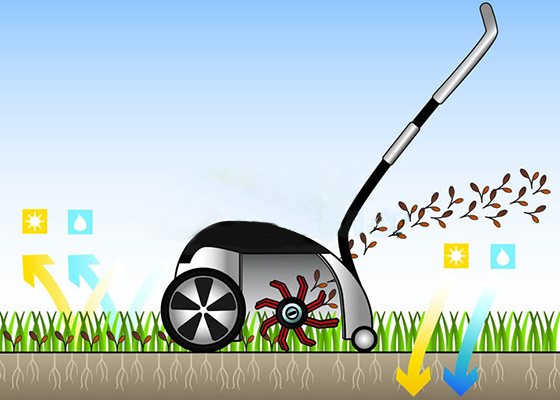

Aeration of the lawn in autumn, as at any other time of the year, requires subsequent "rest" of the lawn for two to three days. Walking on the grass at this time is not worth it.
Lawn care in autumn
The main goal of autumn lawn care is to strengthen the root system of the ground cover grass and prepare for wintering. The list of procedures is short, but they must be performed without fail, then in the spring the lawn will delight you with emerald greens and a dense, shiny, elastic surface.
- Cutting the grass.
- Aeration.
- Collection of fallen leaves.
- Fertilizer.
- Watering.
Let's take a closer look at each of them.
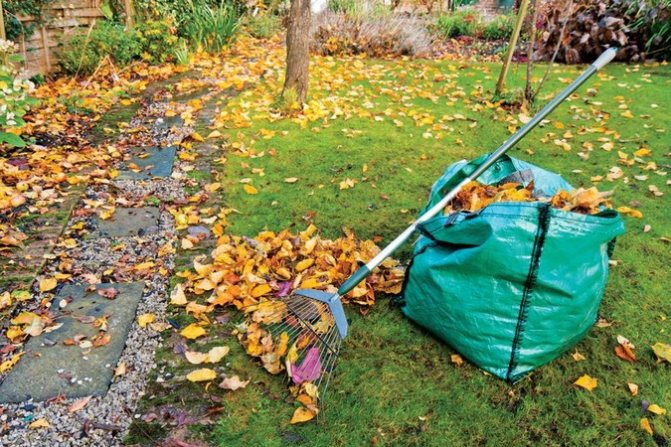

Autumn lawn mowing: when and how
Reducing the growth of the grass cover will allow you to direct the strength of the plant to strengthen the roots. Mowing the lawn is carried out 2 weeks before permanent frosts, cutting off the blades of grass to a height of 5 cm.
It is better to do this with a lawn mower, and it is advisable to drive through the same place 2 times in opposite directions, so all the grass (especially tall), crushed in the first pass, will be cut off.
Leaving the grass above 5-6 cm is impractical, since when it dies, it will cover large areas of the lawn, and there will be a risk of roots drying out. Cutting below 5 cm can lead to freezing of the root system.
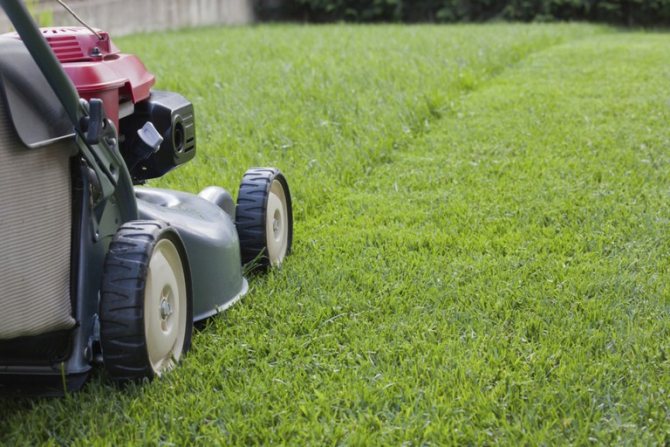

Important! The cut grass must be removed. It is a good mulch and additional fertilizer for perennial shrubs and fruit trees.
Lawn aeration: what is it and why should it be done?
Over the summer, the lawn became denser, especially where people walked on it, there was garden furniture and children played. As a result, air is supplied to the roots in an insufficient volume, which will negatively affect the wintering process: due to its low thermal conductivity, air protects the roots from low air temperatures.
In addition, the abundance of moisture in autumn contributes to root rot, and the ice crust that forms on the surface of the lawn at negative temperatures will prevent plants from breathing.
To prevent this from happening, it is necessary to make the surface of the lawn looser and more breathable. For this, special mechanisms are used, called aerators, which pierce the soil to a depth of 10-15 cm.
But improvised tools are also quite suitable: a pitchfork or special devices for garden shoes.
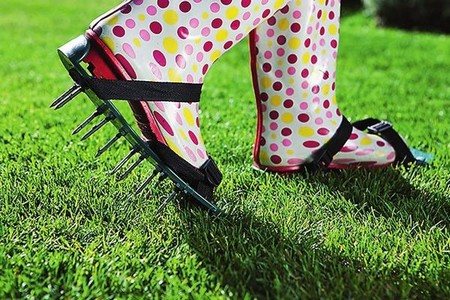

The main thing is that the punctures should be at a distance of no more than 30 cm from each other and to a depth of at least 10 cm. When working with forks, you need to stick them into the surface of the lawn and pull them slightly towards you, thus raising the sod by a few centimeters.
After this operation, excess moisture from the lawn will go into the deep layers of the soil, and the soil will be saturated with oxygen.
For the regions of Siberia, the North and the Far East, characterized by severe winters, before the aeration procedure, it is advisable to carry out the so-called "canopy shelter", as a result of which the lawn receives additional insulation.
For this, the surface of the lawn is covered with a mixture of rotted manure and compost in a 1: 1 ratio with a layer 2-3 cm thick. And only after that the area is aerated.
Note! After aeration, do not walk on the lawn for 2-3 days.
Do I need to collect fallen leaves from the lawn
Experienced gardeners unequivocally answer this question in the affirmative. Fallen leaves are a threat of root damping, so it is better to collect them and place them as additional fertilizer under bushes, trees or send them to a compost pit. It is better to collect the leaves regularly, 1-2 times a week, as they fall.
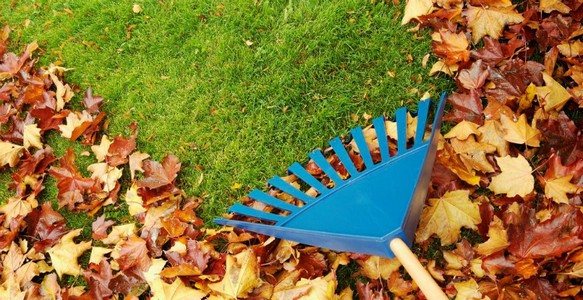

They must be completely removed before the lawn is preserved - at the end of October, before the onset of frost.
Autumn top dressing of the lawn
It is held twice in the fall:
- End of August - beginning of September.
- Mid or late October, 2 weeks before frost.
Important! The composition of the top dressing should not contain nitrogen fertilizers that cause the growth of green mass and weaken the plant before wintering.
The optimal composition of autumn fertilizers is phosphorus and potassium, which strengthen the root system, increase immunity to negative weather conditions and promote the growth of lateral roots, which in spring will give a dense green cover to the lawn.
Special autumn fertilizers for lawn grasses also contain selective herbicides that suppress the growth of dicotyledonous plants (dandelion, plantain) and mosses.
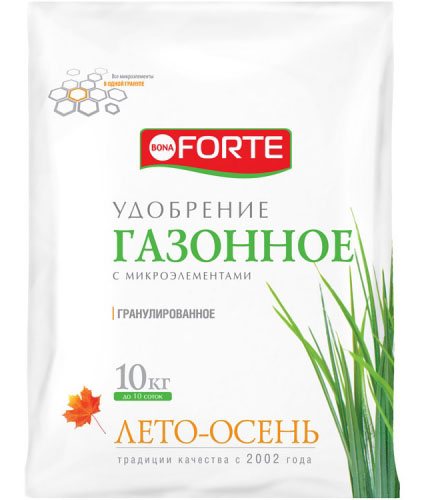

Note! Do not feed the lawn immediately after mowing it. If fertilizer gets on the cut site, the entire plant will die.
Read also: How to grow hyacinths in the country
Top dressing is carried out 2-3 days after the haircut.
The concentration of fertilizers must fully comply with the instructions for the preparation. Top dressing is used both in liquid form and evenly scattering granules over the site.
When is the last time to water the lawn in the fall
The plant needs moisture for the development and strengthening of the root system, for the absorption of nutrients from the soil. However, its excess can lead to stagnation, the formation of puddles on the surface and the subsequent decay of the plant and its roots.
In dry autumn, watering is carried out by sprinkling no more than 1 time per week, preferably in the morning, so that by a cold night the water has time to be absorbed and go into the deep layers of the soil. The last watering is carried out no later than the first week of October, after which watering is stopped!
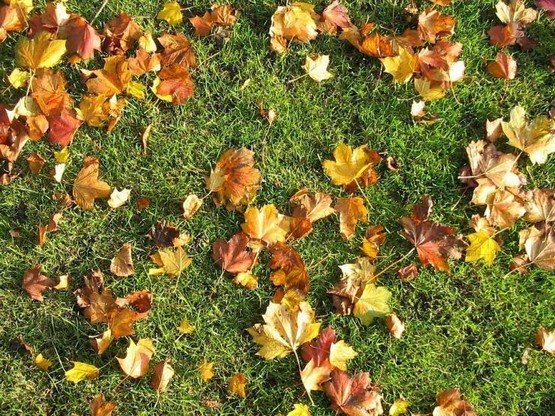

Do I need to cover the lawn for the winter
If all of the above operations are carried out correctly and in the proposed sequence, additional lawn cover is not required even in severe winters.
By the onset of cold weather, the root system will be strong enough to endure even severe frosts, and shoots 5-6 cm high, remaining on the surface, will keep snow in the area and serve as additional insulation for the plant.
Note! It is highly undesirable to walk on a snow-covered lawn before the formation of a stable snow cover, this can damage the plants that have not yet gone into the dormant stage.
If an ice crust forms on the surface of the lawn, it must be broken with a rake.
Lawn mulching
To cover the territory of the lawn with mulch, complex compounds are suitable that regulate the air-water regime, protect the soil, and also level the surface of the lawn. The material is applied in small portions to cover approximately 5-8 mm of the layer. At the same time, mulch protects bare roots from drying out, and creates a fertile layer for further development of the root system and shoots.


Mulch consists of sand, loam and peat. It is introduced in the autumn, at the end of September - mid-October. You can spread the finished material manually or with a seeder. Distribute and level the layer - with a fan rake!
Summing up
- When preparing a lawn for winter, 4 mandatory operations must be performed:
- cutting grass to a height of 5 cm;
- aeration of the lawn;
- applying autumn fertilizers that do not contain nitrogen;
- watering the site.
- For additional insulation and feeding of the lawn, you can carry out a shallow shelter with a mixture of rotted manure and humus with a layer of 2-3 cm.
- Regular cleaning of fallen leaves is a prerequisite for the survival of the lawn in the winter.
- Additional shelter for the lawn for the winter is not required.
Autumn lawn care:
Lawn in the fall. Preparing your lawn for winter:
Autumn lawn care and preparation for winter
A spacious, even grass cover on a suburban area is an excellent natural setting for a recreation area, a backdrop for flower beds and flower beds or a rock garden. Regardless of its purpose and size, the lawn needs regular mowing, fertilization, cleaning of leaves in autumn and weeds in spring. Like all elements of landscape design, lawns require various activities before leaving for the winter. A typical preparation plan includes a haircut, renovation, and other types of work that will be discussed.
Preparing your lawn for winter
The fall lawn is not mowed often, and it is best to mow it for the last time of the year before the frost - in October. Watering is performed if the weather is sunny and dry for a long period (once a week). In cool weather, the watering time is increased up to 1 time in 2 weeks. During the same period, fertilizers are applied, leaves and felt are removed, and damaged areas are repaired.
Watering your lawn correctly
Preparation for wintering begins in September. If it is a wet and rainy autumn, then watering the lawn, of course, is not necessary.If the weather is sunny, hot and dry, then watering is done once a week. When moving the irrigation system, its stay in one place at the time of irrigation should not exceed 20 minutes. For stationary drip irrigation, turn it on for half an hour for good root moisture.
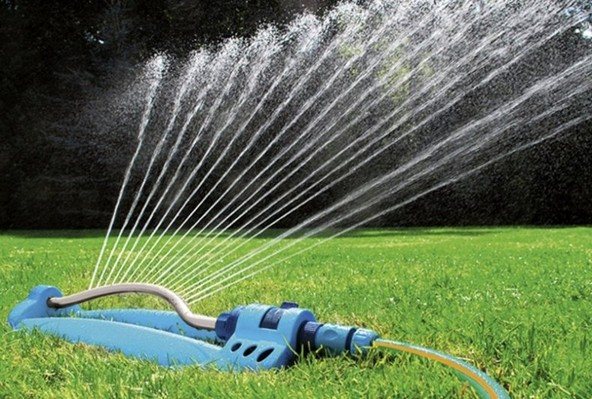

Grass feeding
Lawn trimming is not a particularly complex procedure, but there are a number of mandatory rules in it:
- The optimum condition of the fertilizer site is dry grass and wet soil.
- To evenly apply top dressing, use a manual fertilizer spreader. The device consists of a hopper, grids that screen out debris, and rotating discs that spray fertilizer.
- Two days after applying top dressing, the site must be watered in order to ensure that that part of the fertilizer that, for some reason, was not absorbed into the wet lawn at the time of application, gets into the soil.
If there is not enough time to carry out various dressings, you can apply a special concentrated fertilizer for lawns to the soil. It contains all the trace elements necessary for the soil.
How and why to do aeration
As the lawn develops and grows, the soil in it becomes compacted, and the root system forms a single poorly ventilated and poorly developing layer. To add air to this layer, it needs to be punctured, thereby creating breathing holes.
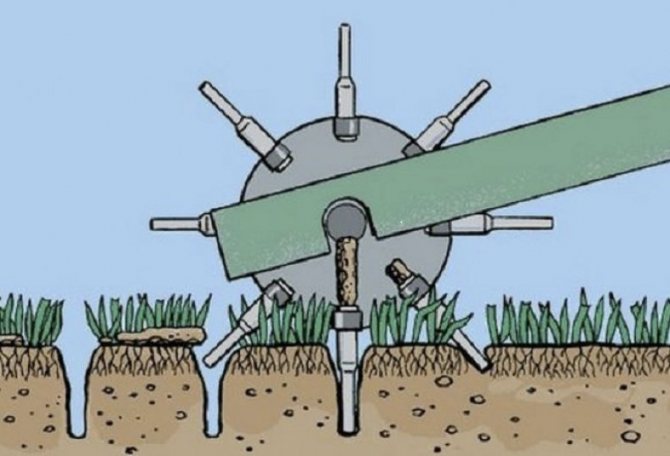

An aerator is a device that is designed to create punctures in the turf. It can be mechanical or electrical. The simplest model for aeration is a garden rake that evenly pierces the soil.


Sandals for aeration Also popular are sandals for aeration, which are spiked soles, which are put on top of ordinary shoes and in this form move around the area, evenly piercing the sod. In addition, you can purchase an electric or gasoline aerator.
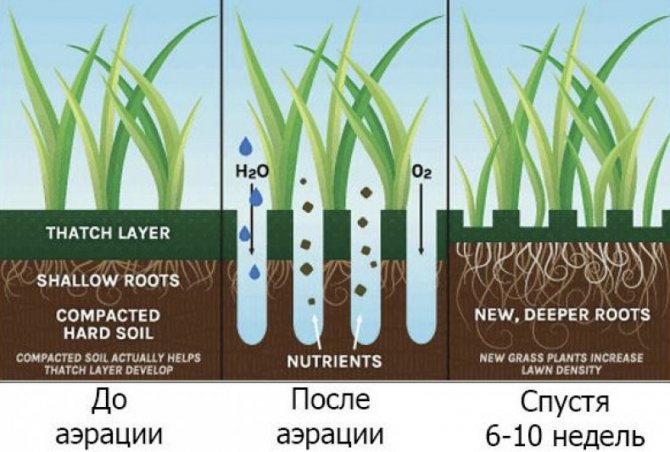

To understand whether the area needs aeration, you need to make a cut of the turf with a shovel. If it is more than 5 cm, then the procedure is necessary. A thick layer of the root system can interfere with the germination of fresh grass, and in rains it retains moisture for too long, which contributes to the development of various pathogenic microflora and insect pests.
When to cut
It's time to mow the lawn if its height exceeds 10 cm.
This should be done so that about 5 cm of grass remains: this plant height is optimal for wintering. The last haircut is performed not earlier than the beginning of October - before the frost. In the cold season, the lawn is not cut. Between the beginning of October and frost, the trimmed grass has time for independent insulation and preparation for wintering.
How to mow a lawn
The lawn is mowed with a lawn mower. The haircut is done in the morning in warm, dry weather. Areas inaccessible to the lawnmower or uneven areas are trimmed with garden shears. The cutting technique consists in passing the section in strips: first, move in one direction to the end of the section, then turn and pass the strip next to it in the opposite direction.
Read also: Nerter flower: home care


It is not recommended to use a lawnmower with blunt blades. When purchasing this type of equipment, pay attention to the presence of the function of adjusting the cutting height. The optimal grass height is 5-6 cm. You can also use a trimmer for mowing: this device performs the same functions as a lawn mower, but at the same time it is a compact and manual version of a grass care device.
Harvesting leaves
It is necessary to remove the leaves from the lawn as they fall, approximately once a week. For harvesting, a conventional flat-toothed garden fan rake is used. The working surface of such a rake is sliding, which speeds up the cleaning process.
You can also use a blower to remove leaves from the area. The tool blows leaves into piles using an air wave.When cleaning large lawns, courts and recreation areas, a garden vacuum cleaner is used: just like a home vacuum cleaner, it pulls in what comes in its path. The collected leaves are placed in a bag attached to the vacuum cleaner. Garden models are designed to use 20-30 liter bags.
Lawn mowing
It is performed for the northern part of the country in early to mid-September, in the middle lane - in late September or early October, in the southern regions - towards the end of the second autumn month. In general, the question of when to mow the lawn before winter is solved with the help of statistics on the onset of frost - about two weeks before it starts. It is, of course, impossible to foresee the exact time of the cold snap, but the analysis of the weather of the autumn months will help to orientate and mow the grass on time.
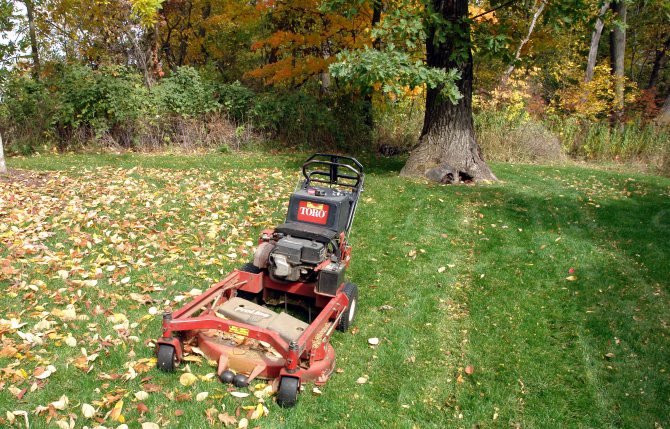

Important: it is undesirable to cut greens grabbed by frosts!
The optimal grass height immediately after cutting is considered to be 4 ... 5 cm. Since the growth of greenery slows down with a cold snap, it is unlikely that the grass will have time to rise to a height of more than 8 cm. This length of grass blades is sufficient for successful wintering and not excessive for new grass germination in spring. If the decision about when the last time to mow the lawn before winter was made incorrectly and the grass did not have time to grow, nothing terrible will happen. It is only necessary to pay more attention to the procedure for mulching the soil and after the onset of frost, do not walk on the lawns.
Lawn repair
In addition to harvesting leaves, it is necessary to clean the lawn from "felt" - this is the name of a layer of dying old grass, crumbling plant debris and other organic residues. This layer is absolutely not useful for the grass and serves as an excellent "house" for the wintering of various pests, fungi and mold. Comb and remove it with an ordinary garden rake.
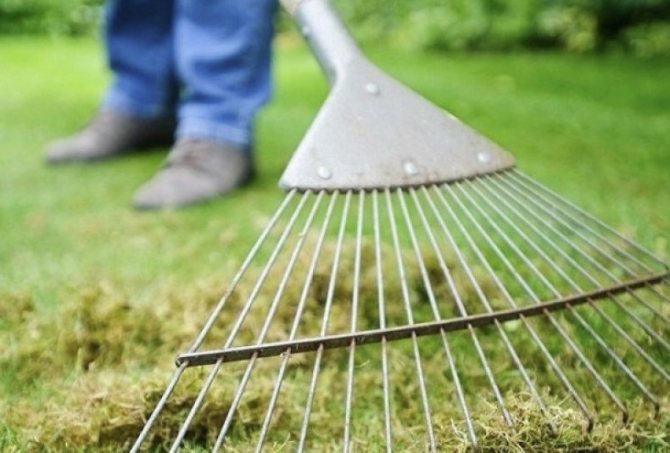

If during cleaning you find areas with damaged grass, yellowed grass, bald spots, then they are treated with fungicidal solutions. Then the empty places are sown again.
The procedure for processing damaged areas:
- process the site with a rake;
- mow everything that is higher than 5 cm;
- perform aeration of the site;
- fluff the soil in the “bald patches” with a metal rake;
- add peat substrate or nutrient mixture for feeding;
- sow seeds;
- gently level with a rake.
Weed cleaning
Weeds on the site appear as a result of the movement of weed seeds by the wind, and are also carried by the droppings of animals or birds. Such plants not only spoil the appearance of the lawn, but also draw moisture and nutrients from the soil.
Weed control on a young one-year-old lawn is especially important. Weed seeds remaining in the soil can germinate here, or shoots from the root system of wheatgrass and other creeping plants will grow. To treat a young lawn, the main method of harvesting is to mow the weeds before flowering. It is undesirable to pull up weeds or use chemical methods - this damages the grass, but regular mowing weakens the root system of the weed and ultimately destroys it. Perennial grasses such as dandelion and plantain are removed after good watering in order to be able to pull out the root with minimal damage to the lawn.


Surface leveling
If bumps appear on the lawn, they need to be removed, as this causes problems when mowing the grass, and the site does not look well-groomed. If swelling has occurred, then it is necessary to level the surface in this place. You need to roll on a dry surface with a roller with a shaft that weighs at least 60 kg. If the mower is equipped with such a shaft, then with it it is necessary to walk around the area and roll in the swollen places.
In small areas, you can trim the lawn with a knife and remove excess soil from under it, and then put the cut piece in place and water it well. The lawn grass will surely take root, and the site will become flat again.
Sowing empty plots
In order to sow bald spots on the lawn, you need to decide on the timing of the sowing. The lawn should have enough time to acclimatize and prepare for winter, which means that sowing should take place no later than early October. If restoration work falls on July-August, then choose cooler days and morning hours for sowing.
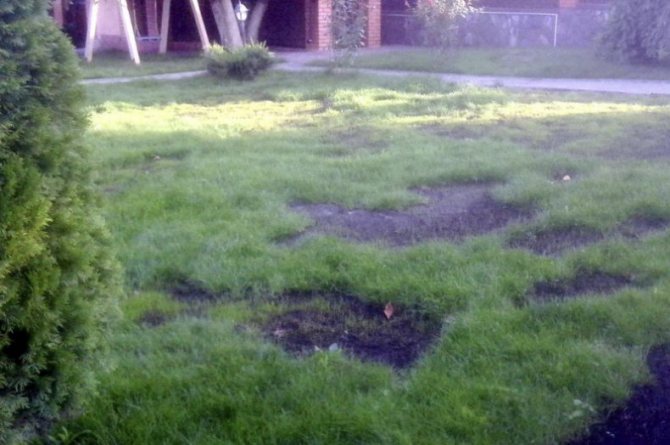

The sowing area is cultivated from weeds and vegetation residues. It is advisable to remove plants mechanically. The compacted soil should be loosened to improve the growth of the lawn grass and the nutrition of its root system. If the root system of the previous grass is too developed on the site, then scarification is performed. Next, the area is abundantly watered, after which fertilizing is applied or a peat substrate is added. Seeds are added along with the substrate. Then you need to carefully level the area with a rake.
The soil in the places where new seeds are introduced must be moistened. Therefore, it is necessary to monitor its condition, especially if sowing is carried out in the hot season. Germination of young grass on the site will begin in 2 weeks.
It should be noted that a properly planted and well-groomed lawn does not require much attention, is resistant to diseases, does not freeze in winter and does not lose its attractiveness at any time of the year. To do this, seasonal activities should be performed correctly, including feeding, watering, aeration, mulching, and disease prevention.
Types of lawns (video)
There are many types of lawns and varieties for sowing, some are suitable exclusively for sports events - hard and less trampled; park and meadow, they are distinguished only by the type of cereals, and what kind of lawn will be on your site depends only on you and your imagination.


Meadow lawns are usually suitable for large and open areas, they are most often used in parks and forest parks, but at a summer cottage this choice will be appropriate. For sowing, usually three to five types of cereals are chosen: creeping and tender wheatgrass, foxtail, timothy grass, bent grass and meadow fescue, adding a little clover to the mixture. Often, a meadow lawn can be created by improving the natural grass stand by removing weeds, loosening the soil and sowing additional cultivated grass mixtures. The Moorish lawn is a vibrant flowering lawn that has an attractive and very solemn appearance. This lawn has the most complex composition, as it includes up to fifteen species of perennial grasses and annual flowering plants. Fescue or meadow mint, bent grass and pasture ryegrass, or other low grasses, or other low grasses, are usually used as the main background, but English experts believe that grass mixtures must be dominated by bent grass seeds or fescue. Of the flowering summer houses, the shortest species are chosen. Flax and annual poppies, delphinium, chamomile, Chinese carnation, annual chrysanthemum and calendula are perfect. It is best to assemble the kit that is comfortable in specific conditions. Mowing the Moorish lawn is carried out after the flowering of spring varieties of plants - around July. And the last haircut is done no later than October. Of course, everything depends directly on the set and flowering and plants. In order to grow an ideal lawn, it should take from three to five years, it should be treated with anxious care, and then you will end up with a beautiful lawn.
Preparing a lawn for winter: what to do in the fall so that the lawn winter well
Preparing your lawn for winter
Lawn care in the fall and preparation for winter include several simple procedures: timely mowing, aeration and fertilization. More details about what else is important to know about the pre-winter "lawn" work, we will talk in our article.
A well-groomed and healthy lawn is a decoration of a suburban area. In order not to think about how to restore the frozen lawn at the beginning of the next season, take care of your summer lawn now. We will tell you how to care for your lawn in the fall in order to properly prepare it for winter.
Sowing a lawn before winter
While figuring out how to prepare a lawn for winter, many land owners are thinking about restoring damaged areas and arranging new ones. To do this, it is necessary to sow the lawn in the fall and protect the turf from the effects of cold weather.
The first step in creating new lawns is soil preparation:
- cleaning of weeds and debris;
- leveling the site and drainage (if necessary);
- digging and fertilizing the soil. After this procedure, the earth needs to "rest" for two to three weeks;
- sowing seeds;
- protection of seed and soil with peat with leveling of the area with a lawn roller.
Since all work can take up to a month, they must be started in August or early September, and finished no later than at the end of September (depending on the climate). When to plant your lawn in the fall depends on the local weather and the type of turf you choose. If the plot is flat, it is permissible to sow grass "under the snow", that is, in slightly frost-bitten ground before the first snowfalls. Despite the late sowing time, such a lawn has no less vitality than earlier sowing.
In a freshly planted area, the grass rarely has time to grow, so you should not worry about the last time you mow the lawn in the fall after sowing - this is most likely not necessary. But watering and fertilization will be required.
When arranging a roll lawn, the requirements are slightly different:
- it is necessary to lay out the prepared rolls in such a way that, before the frost occurs, the grass has time to take root in the soil of the site and adapt, that is, two to three weeks before the cold weather at least;
- the soil for laying must be prepared very carefully, the area is leveled, irregularities are eliminated;
- watering and mowing for rolled lawn is mandatory, regularity - according to the manufacturer's instructions and the advice of installers.
Watering the lawn in autumn
Watering the lawn in autumn
As a rule, the autumn season comes to our latitudes with its constant companion - rainy weather. In September, the soil receives enough moisture, and therefore the lawn should be watered in autumn only in drought (once every 5-7 days). Sprinkling is a great option, but don't let puddles form on your lawn. this can lead to decay.
Read also: Dill - medicinal properties and contraindications, the use of seeds in folk medicine
Usually, lawn watering is stopped in October so that the soil does not become waterlogged, and the grass does not weaken and get sick before the onset of cold weather.
When to mow your lawn in autumn?
If in the summer the country lawn is cut about 1-2 times a week, then in the fall this procedure is carried out less often. The number of haircuts is reduced gradually as the soil temperature drops and the plants slow down their growth.
ON A NOTE! You should not completely abandon the autumn mowing of the lawn, since too high grass with the arrival of frost will grow and thereby interfere with the growth of new shoots. The optimum grass height before wintering is 6-8 cm.
To the question of when to mow the lawn last in the fall, you can answer this way: if you know from the weather forecast when the frost will come, carry out a pre-winter mowing 2 weeks before that time. For the middle lane, this is the beginning of October, for the southern one - mid-end of October, and in the northern regions, the final mowing of the lawn before winter is carried out at the end of September.
Soil mulching
Before the onset of cold weather, it is necessary to remove old grass, fallen leaves and debris from the lawn. For this, you can use a fan rake or a broom. Otherwise, the lawn will not be properly ventilated. And this can lead to the emergence of constant dampness, the accumulation of pathogenic microorganisms and the development of various plant diseases.
It is also necessary to mulch the soil. For this, it is optimal to use a mixture consisting of peat, sand and earth. To increase soil fertility, the entire lawn can be covered with a thick layer of peat mixed with humus. This will contribute to the intensive growth of the grass in the new season. In addition, in the fall, you can even out various irregularities that have formed in the lawn over the summer.
Top dressing of the lawn in the fall
Top dressing of the lawn in the fall
The first thing to remember when choosing an autumn lawn fertilizer is no nitrogen! This element helps to accelerate the growth of green mass, and this is not at all what the plant needs to prepare for frost.
IMPORTANT! For a safe wintering of a plant, the main thing is to strengthen its root system, and not the aerial part, therefore, fertilizer for the lawn in the fall should contain phosphorus and potassium.
7-10 days before the expected frost, the lawn is fertilized with bone meal, making 2-3 glasses per 1 sq. M. This will reduce the acidity and will gradually saturate the soil with nutrients, so that the grass will start growing quite early in the spring. Effective fertilizing of the lawn with double superphosphate, application rate: 50-70 g per 1 sq. M.
Potassium will increase the herb's resistance to diseases and give her strength. Suitable for autumn feeding:
- potassium sulfate, or potassium sulfate (20-30 g per 1 sq. m);
- potassium magnesium (30-60 g per 1 sq. m);
- potassium salt (30-40 g per 1 sq. m), etc.
In stores, you can buy fertilizers specially designed for winter application, usually they are called autumn fertilizers. If the weather persists, water the lawn and let the grass dry before fertilizing. After 2 days, do another watering if there was no rain during this period.
Fertilizing the soil
Lawn fertilization can be complex, but it is better to follow agrotechnical codes and guidelines for individual plants. Thus, there will be no shortage or oversaturation of the soil with organic matter and chemical elements.
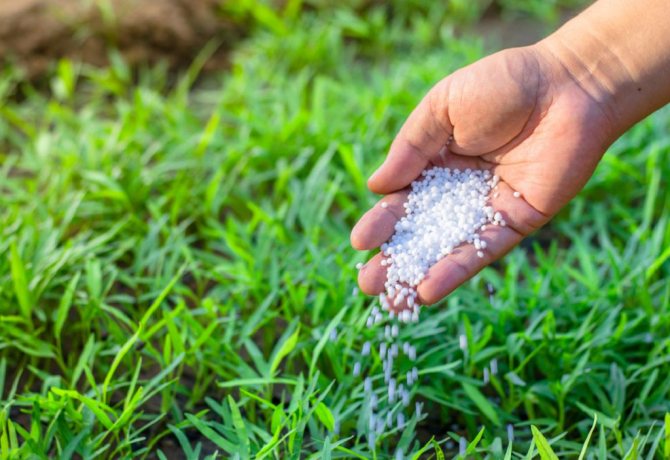

Based on the standard requirements, they are as follows:
- Spring top dressing of the lawn is a nitrogen-rich composition of a complex fertilizer for the rapid formation and growth of greenery. In the complex, phosphorus and potassium are introduced, which improve development and give strength to young shoots;
- Autumn feeding is a complex with a reduced amount of nitrogen, there is more potassium!
Fertilizers can be applied in several ways:
- Liquid solutions - using a watering can or an automatic irrigation system;
- Manually, evenly scattering the composition over the territory of the lawn;
- Using an automatic spreader, seeder, if such equipment is available in the country.
Do not forget to use your own protective equipment when working with chemicals!
Fertilizers should be applied to the soil not very often, but do not forget to do this 3-4 times during the warm season. Approximate schedule - once every 5-6 weeks!
Aeration of the lawn in autumn
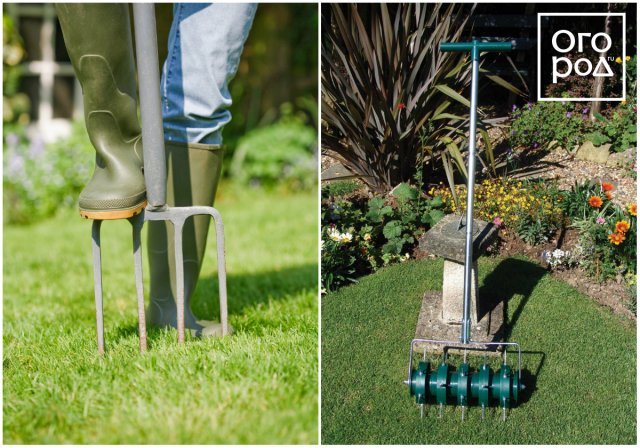

Aeration of the lawn in autumn
To saturate the soil with oxygen, it is necessary to aerate the lawn, and autumn is no exception. If you do not have an aerator, take a regular garden pitchfork and, while piercing the soil, lift the turf layer slightly, tilting it slightly towards you. This is best done in dry weather.
Here are some helpful tips on how to properly pierce the turf with a pitchfork:
- Make punctures at a distance of 20-30 cm from each other.
- A suitable penetration depth is 15-20 cm. This will allow moisture to penetrate into the deep layers of the soil and relieve the formation of an ice crust on the surface of the lawn.
- After the procedure, let the lawn rest - do not walk on it for 2-3 days.
There are two opposing opinions about whether to remove leaves from the lawn in autumn. Some say that in nature, leaf fall is natural, which means that the leaves can be left intact throughout the entire area. But this approach is too categorical: the lawn is an artificially created landscape, so the rule of "naturalness" does not work with it. If foliage is left on the lawn, it will be compressed under a layer of snow, which will interfere with the normal development of the grass.
Is it obligatory to clean the lawn
The lawn leaving in the winter must be healthy and clean. With a special fan rake, we clean it from fallen leaves and clean the so-called felt from the grass (this procedure will reduce the threat of damping off) or use a scarifier.
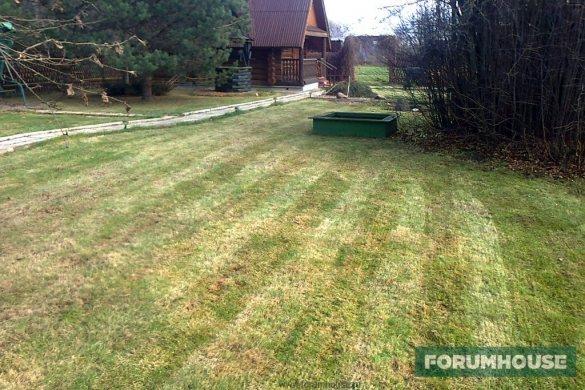

Leaves should not be left on a lawn that is leaving in winter.
PapaTemi FORUMHOUSE Member
We have been doing care on the same site for the eighth year, before winter - a 5 cm haircut and scarification, everything was fine, but last year the client decided to save money in the fall, and the lawn left, untreated and uncut, and not fed. In the spring - snow mold on rotten shag and bald spots.
Cleaning the lawn cannot be neglected; this procedure improves the oxygen supply to the roots of the plant and increases the chances of a successful overwintering.
IgorOld Participant of FORUMHOUSE
Young birches began to sprout on the lawn, in places where there were minor bald spots. So at the moment the earrings are shedding, it will be appropriate to vacuum again.
In a rainy autumn, aeration will not interfere, thanks to which excess moisture will leave the lawn into the soil. This event is always held in the spring, right after the snow has cleared from the lawn, but it will be appropriate in October as well.


